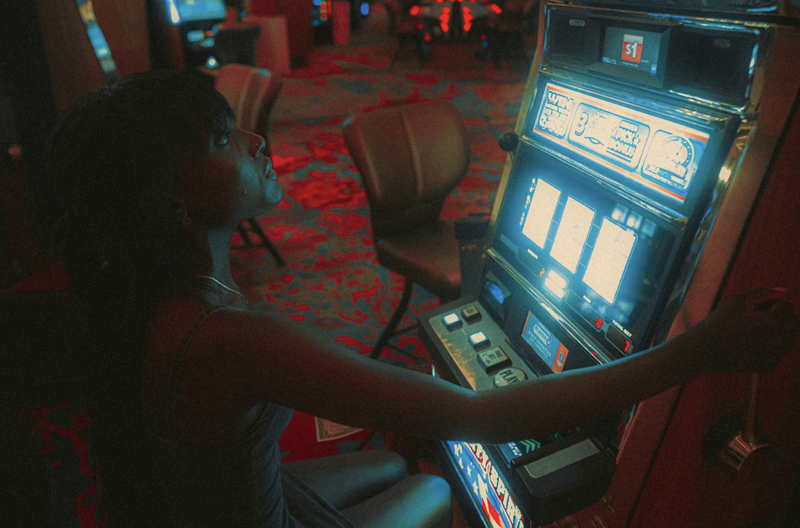
Let’s take a look and explain the differences between different operator models, including White-Label, Turnkey, and In-House. Here’s how that’s important to you as a user.
Why Operating Model Equals Accountability
Operating models don’t seem important when you take an initial look at an online casino. However, things become more important when a potential issue arises. You then see how important the platform on top of the site is built is important. This becomes important in situations when:
-
There are challenges with withdrawals
-
Self-exclusion fails
-
Bonuses are removed
-
Winnings are not paid out
-
An account gets closed
No matter what kind of issue you come across, it’s vital that you know how to escalate it. Now that we have gone over the importance of operating models, let’s explore different ones.
Quick Definitions of Different Online Casino Operating Models
The three most common online casino operating models are:
-
White-Label
-
Turnkey
-
In-house
Each of them has its own advantages and disadvantages from a business owner and user perspective.
White-Label
White-label means that the brand is using a third-party platform to launch and operate its brand. This allows investors to quickly brand their online platform, use a theme of their preference, and enter the iGaming market. This is initially a low-cost approach, as all of the licensing and operations are handled by the software provider.
However, in the long run, this offers only a little bit of control over the platform. For you as a user, this is also important. You need to know who the provider is behind the brand. That way, if a potential issue arises with your account in any way, you need to know who to turn to. In this case, complete accountability is with the provider behind the brand.
Turnkey
This is a similar setup to the white-label approach in terms of working with a platform provider. However, there’s much more customizability available for the investor, allowing more control over their brand.
The most important difference comes down to licensing. With the turnkey operating model, the operator holds the license from the regulatory body. That means that the software provider handles technical parts of the platform, but licensing and issue resolution are in the operator’s hands.
That means that the accountability is on the brand, not on the third-party provider, like with the white-label operation model.
In-House
Last but not least, the in-house approach is the most complex, in which the brand owns everything internally. It’s the most expensive option for an investor but gives the most control in the long run, allowing businesses to scale, remain agile, and move forward more easily.
In this instance, all of the accountability is on the brand. They handle licensing, market requirements, payment processing, customer support, game implementation, and all the processes that an online casino goes through.
For you as a user, this is the best approach, as you know who’s responsible for your account and your private information.
Who’s on the Hook? An Accountability Map
So when you’re using an online casino, it’s good to know who’s accountable for different types of features on the platform. Here’s a quick breakdown.
License Holder and Operator
They are responsible for the following internal protocols:
-
Know your customer and anti-money laundering procedures.
-
Fair terms.
-
Dispute handling.
-
Withdrawals and deposits.
-
Responsible gambling requirements.
Platform Provider
When it comes to platform providers for turnkey and white-label casinos, their responsibility lies with:
-
Platform Uptime.
-
Cashier integrations.
-
Wallet accuracy.
-
Bonus engine behaviour.
These are more technical things, but they’re essential for these platforms to work seamlessly.
Game Studios and Aggregators
Game Studios need to ensure that their games have proper math that meets the fairness standards of the regulatory authorities.
-
Game math.
-
RNG integrity.
-
Uptime for specific titles.
Payment Processors
Payment processors ensure that making deposits and withdrawals is a simple experience for both the operator and the user.
-
Deposit and withdrawals.
-
Chargebacks.
-
Settlement delays.
Regulator & ADR
These bodies serve to protect players from unfair treatment. If you don’t think that you’ve been heard or that an operator has acted unjustly, the last escalation point is the regulator. They enforce rules and mediate disputes between players and operators.
-
Final escalation path.
-
Enforce rules.
-
Mediate disputes.
Where to Report Different Issues
No matter what the issue you experience is, you need to report the problem to the operator. Its team will then raise the issue with either the platform provider, game provider, payment provider, or any other body and seek resolution.
If you keep hitting a wall, you go up the chain and escalate the issue to the top.

Real Situations, Real Responsibility
Let’s take a look at different real-world scenarios and present a map of where to report the problems.
Delayed Withdrawal and Repeated “pending” Status
So with white-label operators, you first report the issue to the brand. If that doesn’t work, the issue is then reported to ADR, who checks the license holder’s compliance and orders this issue to be resolved long-term.
Turnkey and in-house deal with this problem differently. After reporting it to the operator, who is in this case the license holder, they need to resolve it. If not, the issue is escalated to the regulator or ADR, who ensures that the operator keeps following the rules in the future.
Bonus Confiscation Citing Vague “Irregular Play”
The course of action is the same for casinos operating under all models. The license holder needs to support their decision with clear terms and conditions. The operator must adhere to all its license obligations.
RNG Failure and Game Crash During Feature
The operator must liaise this issue with the game studio or aggregator. They have their logs and incident IDs. Request them and request an audit of the game in question.
Self-exclusion Breach
If you can still make deposits and withdrawals despite being self-excluded, the only responsible body is the license holder. When it comes to white-label operation, that’s the provider, and with turnkey and in-house, it’s the brand. Escalate the issue; if it’s not resolved quickly, immediately go to a regulator with all the proof. Take as many screenshots and other proof to support your claims.
How to Tell Which Model You’re Dealing With
If you’re wondering how to tell which model the online casino is operating with, worry not. Seeing this is easy. Simply scroll down to the footer of the site and take a look at the fine print.
Where it says “Operated by (Company Name)”, licensed by “authority name”, the company name is the license holder.
That’s the section where you’ll also find the address of the company. If not, head over to the terms page and you’ll find its address in the first section.
When you explore job listings and press pages, if you notice that it says “Powered by (Platform Name)”, that’s a big hint that you’re on a white-label or a turnkey site.
If you notice that an online casino has plenty of sister sites, that just means that it’s likely a white-label group of casinos all run by the same parent company.
Last but not least, once you notice a completely unique site with an authentic design, game collection, and customer support, it’s likely a fully in-house developed brand.
Why Site Choice Still Matters
No matter how secure your device and software are, using an unreliable platform might lead to data loss. That’s why it’s important to opt for secure online casinos that are transparent about their license details, ADR routes, bonus information, withdrawal times and limits, and support for 2FA. Reputable casinos make that chain of accountability obvious: they name the licensed operator, disclose the tech vendor, and explain who handles KYC, payments, and dispute resolution. If any of this is vague, you risk being bounced between parties when an account locks or a withdrawal stalls. The more independent trust signals you can verify, the greater the odds you’re playing on a secure, responsible site that keeps the fun front and center.
Red Flags by Model
As each of these models isn’t perfect, there are some red flags to consider for each of them.
For example, a white-label brand might hide the license holder, provide no ADR link, and offer simple terms across its sister sites. A turnkey operator might blame the platform for things like internal processing time and potential delays. On the other hand, an in-house brand might hide its internal policies and technology stack. There’s no room for that in the iGaming industry. As they own everything, it should all be transparent so the players can see.
In this growing industry, it comes down to this: If the licence holder isn’t clear within one click, reconsider using that gambling site.
